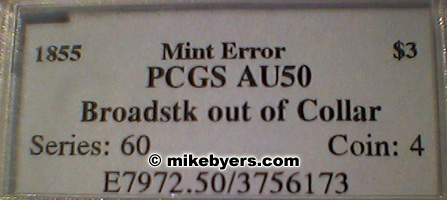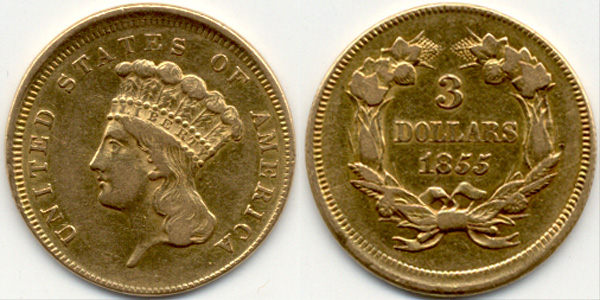Glossary
CategoriesBonded CoinsBroadstrikes Brockages Counterbrockages Die Adjustment Strikes Die Caps Die Trials Double Denomination Double/Multiple Strikes Dual Countries Experimental Blanks Experimental Strikes Experimental Surface Feeder Finger Strikes Galvanos Gold Die Trials Gold Errors Gold Off-Metals Hub Trials Intentional Errors Martha Washington Test Pieces Mated Pairs Mules Multiple Errors Off-Centers Off-Metals Overstrikes Pattern Die Trials Pattern Errors Pattern Mules Plasters Platinum Errors Proof Errors Specimens Spectacular Errors Transitional Errors Two-Headed Coins Two-Tailed Coins Uniface Die Trials Unique Coins |
  BroadstrikesAll U.S. Gold Errors are very scarce. $3 Indian Gold Pieces are scarce even as regular Gold Type Coins. Major Mint Errors on $3 Gold pieces are unheard of. This is only the second known broadstruck $3 Gold Piece for the entire series. This piece is an uncentered broadstruck and looks 5% off-center. It exhibits considerable luster and has a very attractive overall appearance. The other known broadstruck $3 piece was discovered when the Bolt collection of Major Mint Errors was sold in 1974. |



